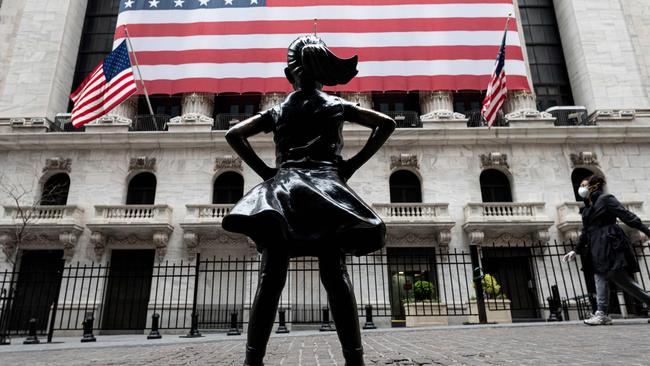Terry McCrann: Nation’s economic recovery is all about Victoria
Never before has the government ordered the economy into recession; ordered businesses to close, ordered people to lose their jobs — and while they did it with the best intentions, now they must order us out of this mess, writes Terry McCrann.

Terry McCrann
Don't miss out on the headlines from Terry McCrann. Followed categories will be added to My News.
Two big things happened during the week, in the rather different places of Canberra and New York.
Well, the first didn’t so much happen in Canberra, but got announced out of there: the official figures from the statistics bureau (the ABS) showing the biggest quarterly plunge in the economy in the 61 years the figures have been produced.
The economy shrank by (for once, a nice round figure of) 7 per cent. If we reported the way the Americans do, we would have been saying it had plunged at an annual rate of 25 per cent.
Either way, there isn’t an economist in the land – or pretty much in every other country which have reported, and experienced, similar plunges – who would ever have imagined in their wildest musings in their entire prior working lives that they would ever see such a figure.
What made it more extraordinary and of course explained the figure is that it was directly ordered by the government. Never before has the government actually ordered the economy into recession; ordered businesses to close, ordered people to lose their jobs.
The government, governments, plural, did so, as we obviously all know, with the good intention of fighting the virus and saving lives.

But what might not be quite so obvious is that it is now up to governments to order us out of recession. And that brings us to Victoria.
In the June quarter, the entire nation was moving – down – pretty much in lockstep.
We don’t get state-by-state production figures, and it is production that GDP measures. That’s the ‘P’. But we do get spending figures, and that broadly captures how bad the state-by-state slumps were.
The national figures showed that the 7 per cent was almost totally caused by consumers cutting their spending – a combination of because they had to as their incomes fell; or they were ordered to, as they couldn’t go to restaurants, the footy or to travel.
The biggest drops were in the two biggest states, NSW falling 13.3 per cent and, of course, Victoria down 13.7 per cent – down to ‘just’ 9.9 per cent in SA and 9.6 per cent in Queensland.
It has been very different in the September quarter, both at the overall national level and across the states. And again it is all about Victoria – and it will also be all about Victoria in the coming December quarter and into 2021.
GDP will have increased in the September quarter. The internal official forecasts are that it will be line-ball; I believe it will be clearly positive.
But it will go nowhere close to making up what we lost in the June quarter. You should know that from your lived experience – (bleeding) obviously in Victoria but even where the other 75 per cent of us live.
If Victoria had been moving in lockstep with the rest of the country, we would have seen quite a sharp recovery through the September quarter. It was not only negative for the state, but dragged the national economy back as well.
Across the world in New York, Wall Street’s spectacular tech-driven surge stumbled. Over the last two days of the week, the Nasdaq dropped more than 700 points or over 6 per cent. The Dow dropped nearly 1000 points or 3.3 per cent.
The big three, Apple, Amazon and Microsoft – each worth all on its own more than the entire value of every share listed on the Australian share market, as I discussed last week – dropped more than $600 billion in combined value, over the two days.

Again, as I discussed, these and the other big tech stocks like Google and Tesla have been the big drivers of the overall spectacular recovery on Wall Street; and that recovery has dragged all markets around the world up with it, including ours.
On Friday it dragged us down.
To my mind, what happened was more at this stage a warning. Investors have seen the tech companies not just as ‘safe harbours’ in very difficult times, but as businesses that are having a “very good virus” which has also delivered a further boost to their longer-term secular growth.
But in doing so they are pricing in that future growth as if it is both locked in and even already delivered.
These share prices are also pricing in near-permanency for the current extraordinary investment conditions of zero global interest rates and the massive multi-trillion dollar liquidity desperately searching the world for some sort of yield.
It does mean that Wall Street is now more of a two-way bet than it’s been in recent months; and a two-way bet that turns on just a handful of mega-stocks.
As I’ve been saying, this anchors our market around 6000.
Albeit now with a (slightly negative) curve ball of a firming Aussie dollar.
Until Wall Street makes up its mind; maybe only after the Melbourne Cup.
Originally published as Terry McCrann: Nation’s economic recovery is all about Victoria

